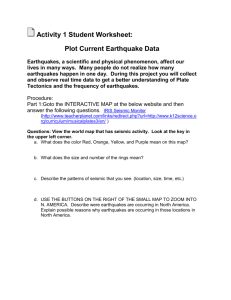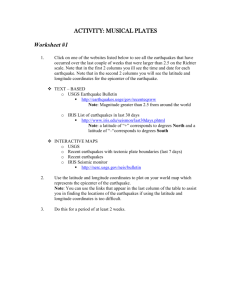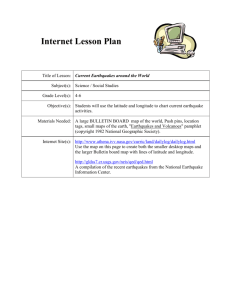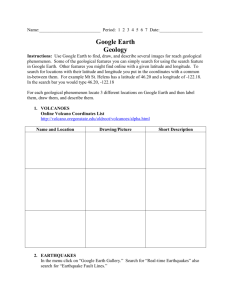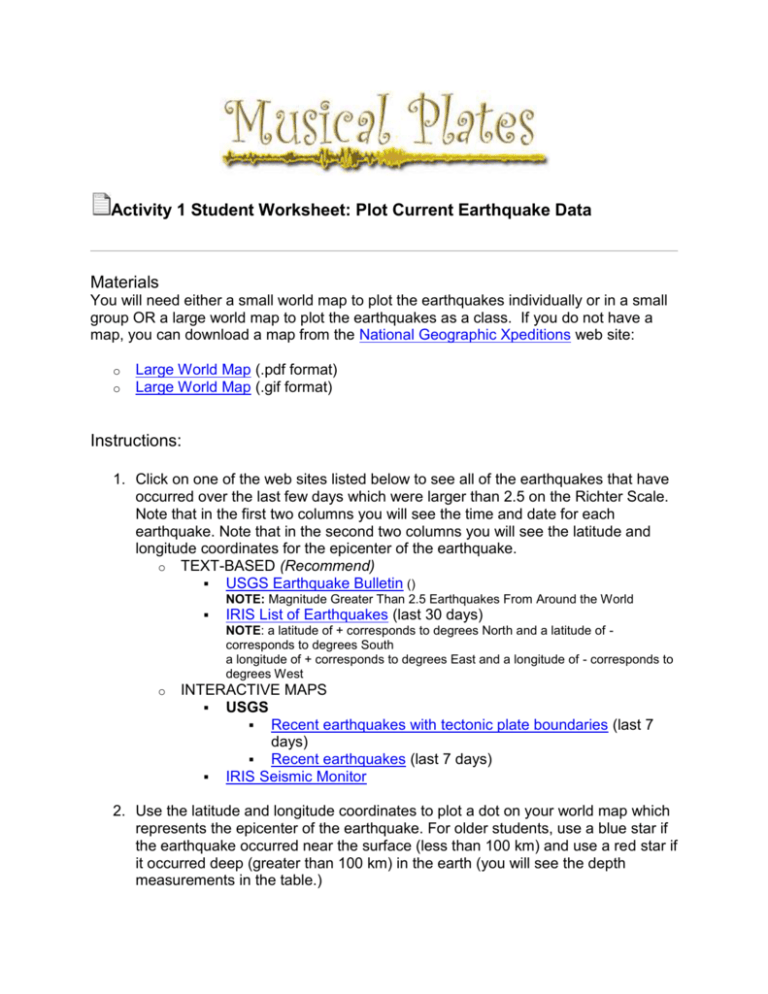
Activity 1 Student Worksheet: Plot Current Earthquake Data
Materials
You will need either a small world map to plot the earthquakes individually or in a small
group OR a large world map to plot the earthquakes as a class. If you do not have a
map, you can download a map from the National Geographic Xpeditions web site:
o
o
Large World Map (.pdf format)
Large World Map (.gif format)
Instructions:
1. Click on one of the web sites listed below to see all of the earthquakes that have
occurred over the last few days which were larger than 2.5 on the Richter Scale.
Note that in the first two columns you will see the time and date for each
earthquake. Note that in the second two columns you will see the latitude and
longitude coordinates for the epicenter of the earthquake.
o TEXT-BASED (Recommend)
USGS Earthquake Bulletin ()
NOTE: Magnitude Greater Than 2.5 Earthquakes From Around the World
IRIS List of Earthquakes (last 30 days)
NOTE: a latitude of + corresponds to degrees North and a latitude of corresponds to degrees South
a longitude of + corresponds to degrees East and a longitude of - corresponds to
degrees West
o
INTERACTIVE MAPS
USGS
Recent earthquakes with tectonic plate boundaries (last 7
days)
Recent earthquakes (last 7 days)
IRIS Seismic Monitor
2. Use the latitude and longitude coordinates to plot a dot on your world map which
represents the epicenter of the earthquake. For older students, use a blue star if
the earthquake occurred near the surface (less than 100 km) and use a red star if
it occurred deep (greater than 100 km) in the earth (you will see the depth
measurements in the table.)
NOTE: You can use the links that appear in the last column of the table to assist
you in finding the locations of the earthquakes if using the latitude and longitude
coordinates is too difficult.
3. Do this for a period of at least two (2) weeks.
Help!! Don't know enough about latitude and longitude or Coordinated Universal Time (UTC)?
Try these sites:
Various documents and activities about Maps, Latitude, & Longitude
What is Coordinated Universal Time (UTC) and what time is it where I live?
Copyright © 2007 Stevens Institute of Technology,
Center for Innovation in Engineering and Science Education (CIESE) All Rights Reserved.


